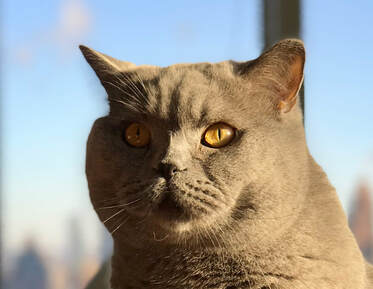Trying desperately to keep my baby alive and healthy for as long as possible, I took to
the internet and spent days researching our options. While there’s no cure for CKD,
there are ways to slow the disease, and that’s what I was resolved to do. The first and
hardest step was controlling her weight which, I must admit, I let get out of control.
She’s always been a little heavy, but I had never done anything about it because, let’s
face it, fat kitties are pretty cute—but it was time for a diet.
If your cat isn’t suffering from CKD, you should still work hard towards implementing a
weight management system so they can hold off on getting the disease for as long as
possible. There were three steps I used to help Kitty Meow Meow, and I think they’ll
work for your fluffy friend as well. They involved sourcing the cause of the obesity,
managing diet, and increasing activity.
of food in her sight. After looking over the options, I settled on trying an anti-anxiety oil, which I figured would have a negligible effect on her kidneys compared to a prescription or anti-histamine. She did seem to calm down a lot after I put some in her food, so I’d say it was a success.
Next was actually changing her diet. Cats with CKD have to eat foods low in
phosphorus, so in addition to being on a prescription diet, I also closely monitored her
food intake. Since she would always devour every last drop and granule of food the
moment it was put in her dish, I decided to feed her smaller amounts five times a day.
At 6am, which is when I wake up, I give her 1/5 cup of dry food and then another 1/5
cup half an hour later. I do this same thing at 6pm when I get home, and for my lunch
break I run home and give her 1/5 cup of wet food—making sure it’s mostly gravy, and if it does contain meat that it’s chicken thigh, beef stew, or tuna, which are all lower in
phosphorus.
I also began playing with Meow Meow more often to tire her out and help her lose some excess weight. Suddenly, instead of playing with her ten to twenty minutes a day it was running on an hour or more—and all it took was a laser pointer! After a couple months I noticed she was less thirsty (cats with CKD drink a LOT of water because they can’t retain fluids well) and had more energy than ever. She had also lost a cool 8 lbs of weight.
I can only wish I had done this sooner for her, and then maybe we wouldn’t be in this
position in the first place. So, if your kitten is a little hefty it may be smart to help them
lose a bit of weight, no matter how cute they are!
This article was written by Victoria Ward


 RSS Feed
RSS Feed

